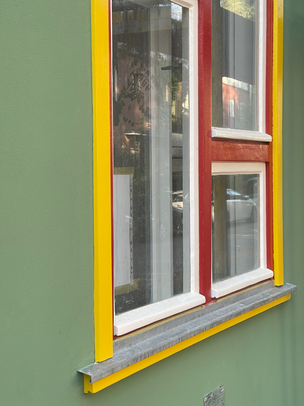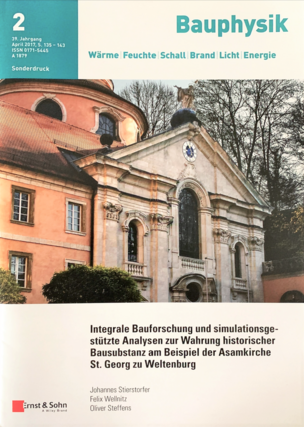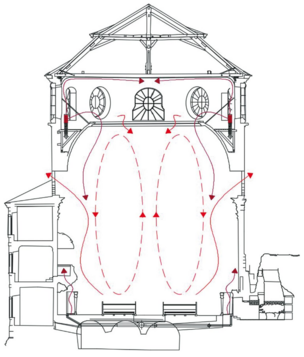Sustainable preservation of world heritage architecture with high performance insulation materials
New aerogel-based materials have significantly lower thermal conductivity than conventional insulation materials. High insulation values are therefore possible with minimal layer thicknesses. This has great potential for use in historic buildings, which have been difficult to insulate in the past due to the risk of endangering heritage values. A well insulated building envelope significantly reduces heating loads, allowing ambient heat to be used efficiently with heat pump technology. Architectural monuments can thus make a significant contribution to CO2 savings in the building sector. Two townhouses designed by Bruno Taut in the listed 1920s Waldsiedlung Zehlendorf, an outstanding example of early 20th-century housing estates, will be fitted with a high-performance plaster system and insulation mat.
The aim is to provide a holistic assessment of the insulation measures, particularly with regard to the climate protection requirements that need to be met in the estate as part of the ongoing application process for the Waldsiedlung to be included in the existing UNESCO World Heritage Site of Berlin's Modernist Housing Estates.
Licht, Luft und Sonne - Das Haus Schminke von Hans Scharoun
Licht, Luft und Sonne - Das Haus Schminke von Hans Scharoun. Die nachhaltige und denkmalgerechte Ertüchtigung einer Ikone der Moderne in Zeiten von Klimawandel und Ressourcenknappheit.
Kooperation des Forschungsclusters nachhaltiges Bauen und historische Bauforschung (NBHB) der OTH Regensburg mit der Stiftung Haus Schminke, Löbau.
Gefördert vom Technologie- und Wissenschaftsnetzwerk (TWO) mit 67.000,- €.
Veröffentlicht in der BAUSUBSTANZ, Zeitschrift für nachhaltiges Bauen, Bauwerksinstandsetzung und Denkmalpflege, Heft 1/2017, Fraunhofer IRB Verlag, Stuttgart.
Asamkirche St. Georg zu Weltenburg
Bauwerksdiagnostik, Klimamonitoring und -optimierung der Asamkirche St. Georg zu Weltenburg. Kooperation des Forschungsclusters nachhaltiges Bauen und historische Bauforschung (NBHB) mit der Benediktinerabtei St. Georg in Weltenburg an der Donau.
Gefördert vom Technologie-und Wissenschaftsnetzwerk (TWO) mit 40.000,-€.
Veröffentlicht in der Zeitschrift BAUPHYSIK, 39 (2017), Heft 2. Ernst & Sohn, Berlin.
Bild Haus Schminke: Ralf Ganter/ Stiftung Haus Schminke
Schnittschema: Johannes Stierstorfer
Maggie
Energetische Modernisierung des genossenschaftlichen Wohnquartiers Margaretenau in Regensburg: Musterlösungen für solaroptimiertes Wohnen mit innovativen solaraktiven Baustoffen und vorhersagebasierter Versorgungstechnologie in Kombination mit einem neuen Hybridsystem aus
Wärmepumpentechnologie und Kraft-Wärme-Kopplung.
Kooperation mit dem Forschungscluster nachhaltiges Bauen und historische Bauforschung (NBHB) der OTH Regensburg. Gefördert vom BMWi im Programm „Zukunft Bau – solares Bauen“ mit 3,45 Mio €.




